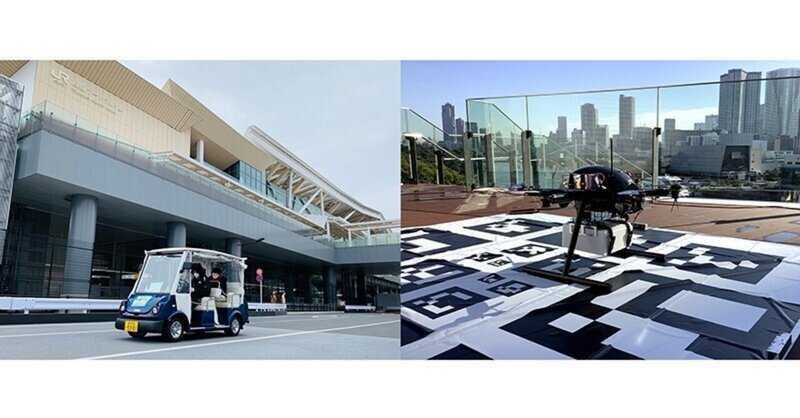
Solving “Local Issues” that exist worldwide - Report on demonstration experiments of Drone and Green Slow Mobility
This series of “note” brought to you by the “TokyoYard PROJECT”, a part of the Shinagawa Development Project around Takanawa Gateway Station promoted by East Japan Railway Company, aims to present you with the background and the process behind the development as well as our philosophy on city planning.
https://note.com/tokyoyard
In this issue, we would like to introduce to you the demonstration experiments of ”Green Slow Mobility” and “Drone food delivery in populated areas” conducted last year. The Shinagawa Development Project upholds the theme of “testing ground for the rich lives of the people in the coming 100 years,” and we are conducting various experiments such as the Flexible Life Design Project and the Pocket Marché, which have been covered in our previous post. You might wonder why we hold up “experiment” as our theme. Yamagata, a member of the JR East Shinagawa Development Project Team, is here to tell you all about it.
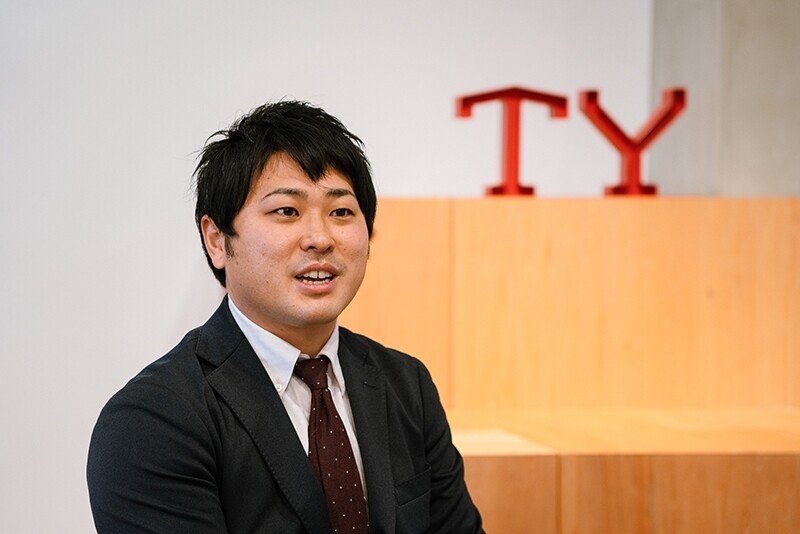
Yusuke Yamagata
Shinagawa Life Style Promotion Unit (Planning), New Business Creation Division, Business Creation Headquarters, East Japan Railway Company.
Yamagata is in charge of creating new services with the opening of the city in mind, interacting with and planning events for the community, as well as mobility services.
Utilizing Green Slow Mobility
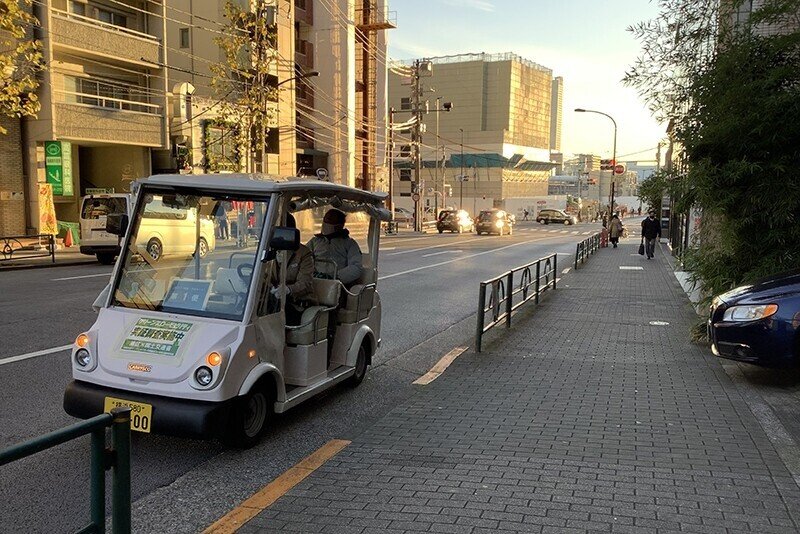
The demonstration experiment of Green Slow Mobility was conducted in Shirokane and Takanawa areas for two weeks from late November of last year. The experiment, which was conducted in cooperation with Minato Ward as a publicly offered project by the MLIT (Ministry of Land, Infrastructure, Transport and Tourism), used small electric vehicles to operate a fixed route that respectively circles the Takanawa and Takanawa/Shirogane routes in 30 and 60 minutes.
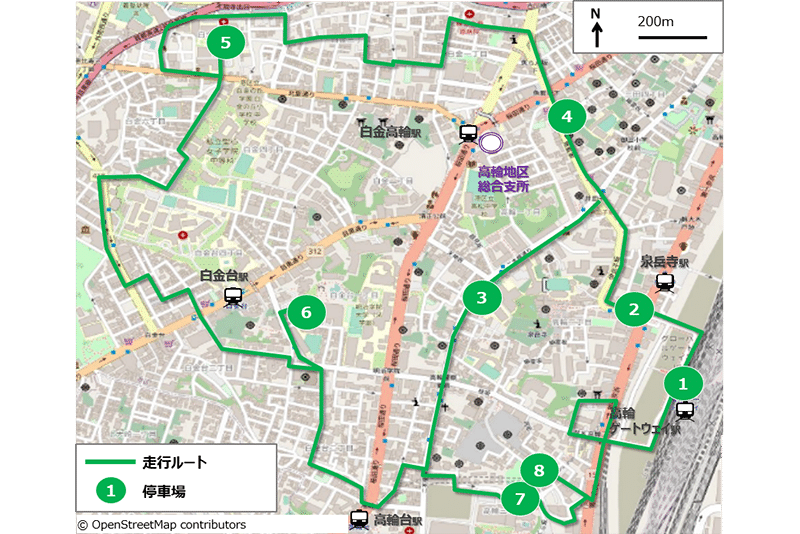
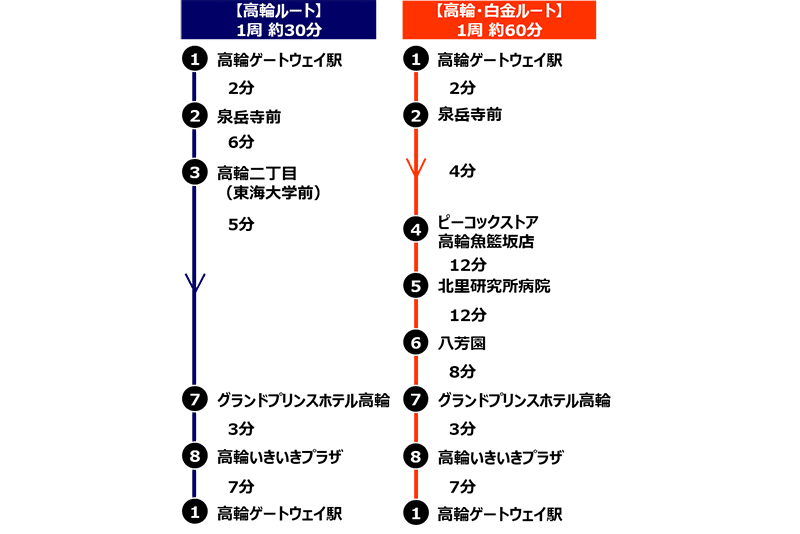
The purpose of the Green Slow Mobility experiment is to solve transportation problems and foster micro tourism. The Takanawa area, Takeshiba, and the rest of the bay area have a relatively large number of transportation options to get around in north-south direction via railroad tracks and trunk roads, but there are few mobility options to get around in terms of east-west direction. In addition, there was a need to consider alternative means of transportation to trains and buses since the Takanawa area has the highest aging population out of all five districts of Minato ward, and there are many narrow streets and slopes that cannot be accessed by public transportation. Since the new city upholds the theme of ”Ekimachi integrated”, connecting the station (Eki) and the town (Machi), as well as the city and the community, we conducted a demonstration experiment of Green Slow Mobility to study the next generation of urban mobility that would reciprocally connect residents, visitors, and the community, while having a low environmental impact.
Although reservations were required for the participation, the event was almost fully booked, and participants commented that they were able to experience routes they would not normally take and that they had found the city anew. As the vehicles are eco-friendly (“Green”) and “Slow”-moving, we were concerned about causing traffic congestion since they travel at a low speed of less than 20 km/h (12mph). However, no major problems were observed. We believe that the Green Slow Mobility has the potential to be one of the most effective ways to not only get around but also to create an opportunity for people to re-discover the area they live in.
While having said that, the said vehicles do not have doors on both sides, making it difficult to carry people in the winter, and further verification of safety is needed. In addition to the service and performance aspects, there are also many legal hurdles in running next-generation mobility vehicles on public roads, and many issues remain to be solved to respond to the detailed needs of customers and to implement them in a wider area.
Drone food delivery in populated areas
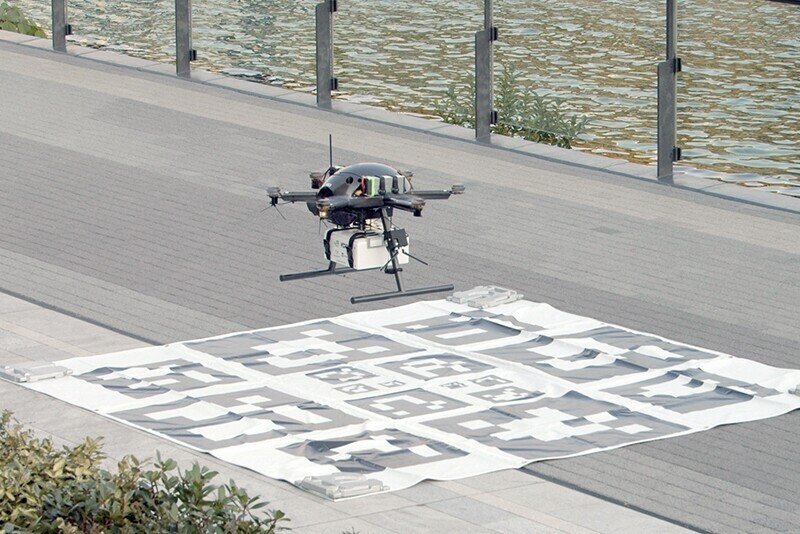
The demonstration experiment of entertainment food delivery via drone in populated areas was also conducted in November of last year. The experiment was adopted by the Tokyo Metropolitan Government as one of its publicly offered projects for the social implementation of logistics using drones and is being carried out by a consortium consisting of JR East, KDDI, Weathernews Inc., TerraDrone, and Japan Airline
https://note.com/smart_tokyo/n/n9eb178136edf
Following the previous year's desk study of reviewing what type of business model would lead to better social implementation, the experiment was conducted in Takeshiba, located in the bay area, to explore its feasibility.
Two underlying issues lead to the consideration of food delivery via drones. One is due to the issue on the part of consumers, such as the difficulty of going out under this COVID situation, and, as mentioned earlier, the lack of convenience in mobility for the east-west direction. The second is on the part of restaurants, such as the decline in sales at stores and the need to respond to delivery demand. This demonstration experiment was conducted to study effective ways to address these social issues.
In this experiment, we prepared two patterns of restaurant course meals and had them purchased by the participants in advance and delivered to them. In most cases, participants are asked to participate in such demonstration experiments for free of charge, but to get honest feedback, we asked them to pay for the meal and the delivery. Despite the experiment being non-free and the meal’s price range being rather high, the event sold out within a week of the start of the application, and the level of customer satisfaction ended up being extremely high.
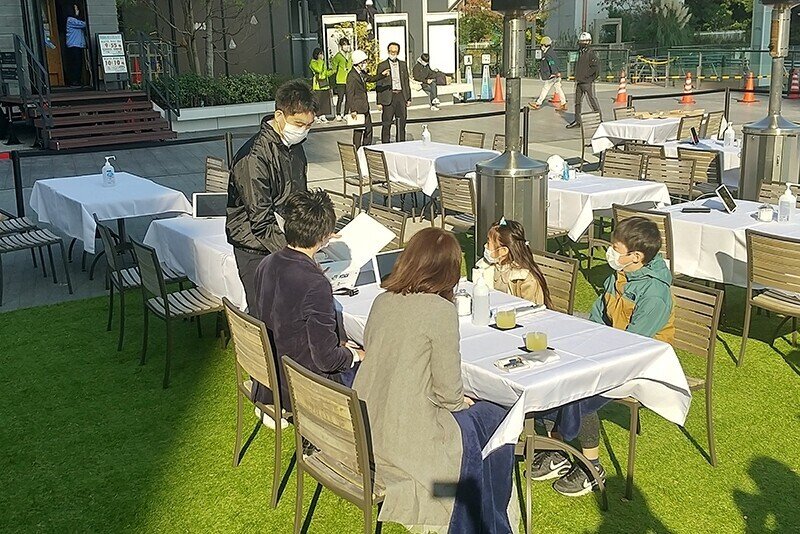
However, we found some issues that needed to be addressed for the drone to be used continuously and to be widely used at a level close to our daily lives. Although the ban on the out-of-sight flight in populated areas is scheduled to be lifted around 2022, customers were not allowed within a 30-meter radius of the drone, and the drone had to be operated within line-of-sight for this experiment. In addition, although the experiment conducted this time took place at Waters Takeshiba managed by JR East, it is necessary to obtain permission from the owners of the private property for the drones to fly over. This could be a complicated procedure. When the goal is to deliver the meals to the balconies of residents, these legal and regulatory hurdles have to be overcome. We also have to clear technical issues such as the drop in accuracy of GPS around balconies and the inaccessibility of drones in many places.
Furthermore, since the goal of the project is to solve local issues, we need to look into the “hows” of delivering meals from small businesses and restaurants, creating drone ports for businesses, and building a mechanism to ensure smooth delivery of meals from them to the drones. Many obstacles need to be overcome to deliver the food not only to a specific location but also to the surrounding areas, and this was a good opportunity to identify what issues can be expected in the future.
Co-creation and testing ground necessary for solving issues of the community and society as a whole
Now, why do we emphasize that the new city to be created in the Shinagawa Development Project is a “testing ground”? And why do we conduct these demonstration experiments in the first place? The answer to that is to realize city planning that solves social issues, one that departs from existing urban development.
In the past, most urban developments tended to be based on a business model centered on real estate leasing, where the land is cleared and new facilities are built, and the developer earns profits from the rent paid by the tenants. Such a way of city planning does not necessarily bring good results to the surrounding areas, and it is sometimes difficult to solve the various social issues we face today solely by building hardware and attracting tenants. Urban development and city planning require a shift, and we have a responsibility to implement it for society in the future.
However, the issues that remain in society cannot be solved by JR East alone. To quickly and flexibly develop products and services while identifying the issues faced by residents and customers, we need to utilize the strengths of our external partners to co-create and collaborate with them. And to gather the weapons and wisdom of many partners, the city must be an open and accessible field where experiments are tolerated.
The definition of success for this demonstration experiment is not ”success in itself”. Even if we fail, it is important to understand what is not possible at the moment and to identify the issues that need to be addressed to succeed. Due to its nature, it’s not an easy thing for the “company” to accept both success and failure when taking on challenges. However, we believe that if we take the initiative in taking on such challenges, we will be able to encourage local communities to take on new challenges and have a positive impact on society.
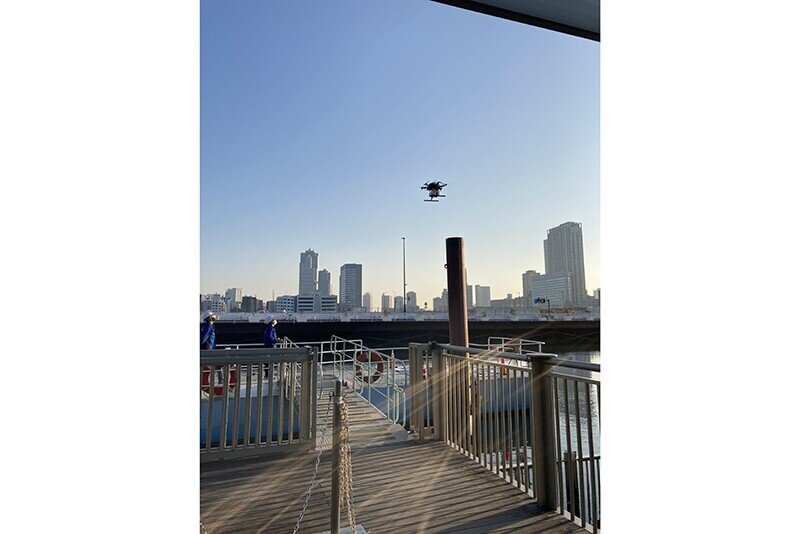
We hope to solve local issues through co-creation and experimentation, and at the same time, contribute to solving the problems of society as a whole on a broader scale through our efforts. The sense of challenge that underlies the demonstration experiment is not unique to the Takanawa and Shirokane areas; there are regions throughout Japan and even the world that share such common issues. The reason we picked Takeshiba for the drone demonstration experiment is that we do not want for the development to complete itself in the Takanawa Gateway area (Takanawa, Shirokane, Sengakuji, etc.) but to work with other development areas such as Takeshiba and other bay areas to improve the value of the entire region.
To achieve this, we need to continue conducting further experiments and create an open and accessible field where we can recruit more co-creation partners to explore the root of social issues from multiple perspectives.
Interview and Edit by Takuya Wada
Photograph by Yutaro Yamaguchi
Translation by Keitaro Takama
Content Direction by blkswn publishers Inc.
#TokyoYard #TokyoYardPROJECT #TakanawaGatewayStation #urbandevelopment #Tokyo #Drone #GreenSlowMobility #mobility #ubandevelopment #society #business #experimentation #local issue #microtourism #fooddelivery #Ekimachiintegrated #waterstakeshiba #collaborativeproject
この記事が気に入ったらサポートをしてみませんか?
